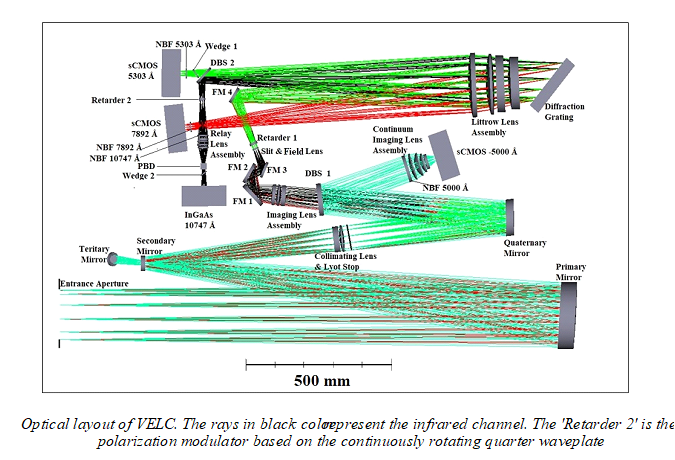A team of Indian Scientists and engineers found a unique way to keep the data volume of Aditya L1, India’s first spacecraft mission to study the Sun low while also allowing the astronomers to derive the full Stokes polarisation measurements accurately. The magnetic field information is encoded in the form of polarization in spectral lines. Hence by measuring polarization in spectral lines magnetic field on the sun can be estimated.

The design challenges of each space observatory are unique, and the instrument builders have to anticipate and solve each potential problem well before the satellite can be launched into space. Aditya-L1, India's first dedicated solar and space weather observatory to be launched by ISRO in 2022, is no exception. Like every space telescope design, it has to optimise between the large data volume needed by astronomers and the constraints imposed on the data size by telemetry to the ground.
Scientists and engineers at the Indian Institute of Astrophysics, an autonomous institute of the Department of Science & Technology, Govt. of India, have solved the optimisation problem of the data collected with the spectro-polarimeter (combining a telescope, a polarimeter to convert the polarization of light into variations of the intensity, so-called the polarization modulation, and a spectrometer) on-board Aditya-L1- through a new calibration procedure. The spectro-polarimeter, which encodes magnetic field information, lets the incoming light pass through a continuously rotating waveplate acting as a polarization modulator, followed by a dual-beam detector that samples the light at a particular rate.
The IIA team optimised the number of samples to data collected per half rotation of waveplate. So instead of the commonly used eight samples, they used four samples. This reduced the data volume considerably, but since the detector and the modulator function are independent of each other, it would be difficult to extract the polarisation parameters accurately over the long integration times needed to study the Sun. To resolve this, they formulated a calibration process by which a source of known polarisation can be used to derive the properties of the polarimeter that convert polarization into intensity variation. This now allowed them to keep the data volume low while also allowing for the astronomers to derive the full polarisation measurements accurately.
This research by a team including K. Nagaraju, B. Raghavendra Prasad, Bhavana S. Hegde, Suresh Venkata Narra, D. Utkarsha, Amit Kumar, Jagdev Singh, and Varun Kumar, all from IIA, has been accepted for publication in the Journal of Applied Optics.
Aditya-L1, which is being built by a collaboration between ISRO and many Indian research institutes, will have seven different science payloads to make measurements. The construction of the largest of them, the Visible Emission Line Coronagraph (VELC), is being led by the Indian Institute of Astrophysics (IIA). The VELC can continuously image the Sun in the wavelengths of particular spectral lines in the visible and record spectroscopic data in visible and infrared wavelengths. It can also make observations in the infrared, which gives us the coronal magnetic field topology and the quantitative estimation of longitudinal magnetic field of the Sun.
For more details, K Nagaraju (nagarajuk[at]iiap[dot]res[dot]in) can be contacted.






























